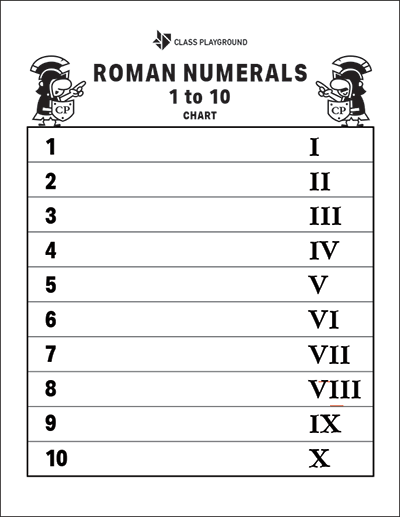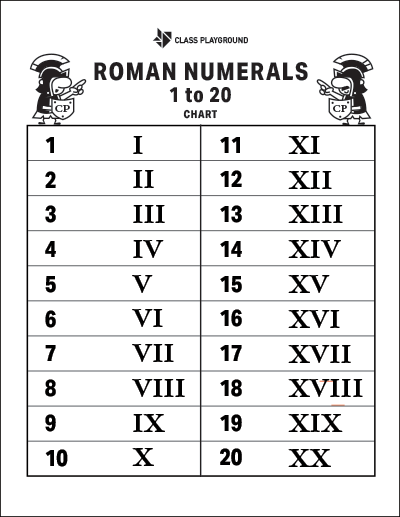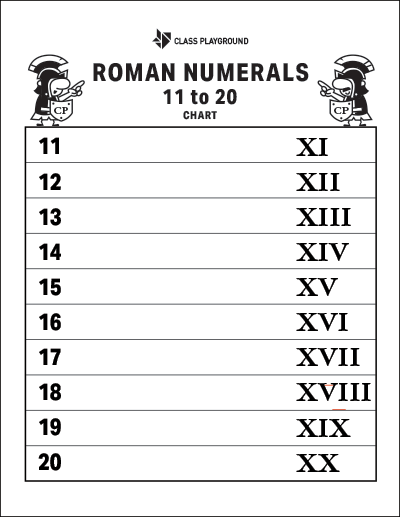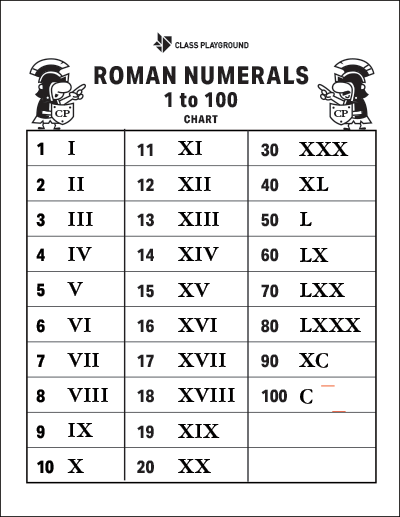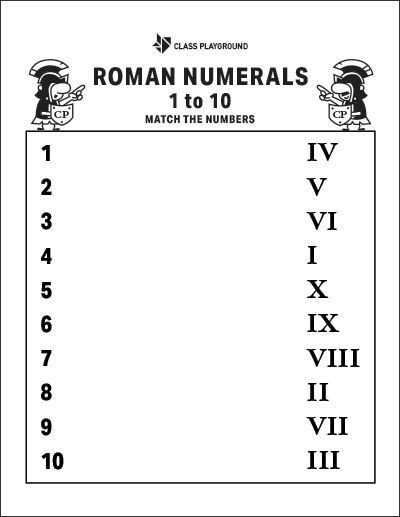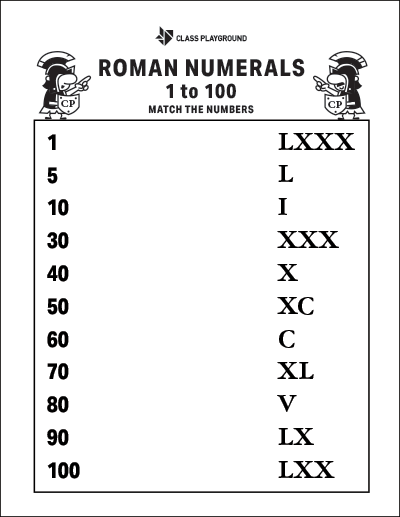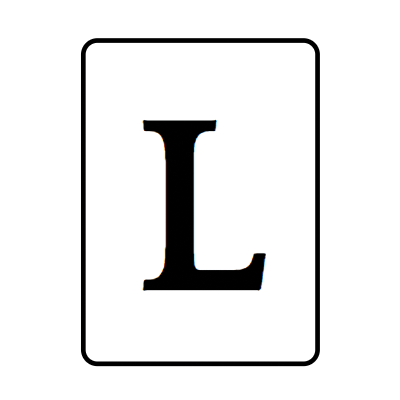Intro
The Roman numeral system is one way to notate numbers. As you can tell by the name, it was used by the Romans in ancient times. It uses a combination of 7 letters to represent numbers.
The system that we use in the English-speaking world today is the Arabic numeral system. Arabic numerals consist of ten symbols – 0, 1, 2, 3, 4, 5, 6, 7, 8, 9. Each symbol has a value, and the position of the numeral also has a value.
Children usually learn Roman numerals as part of the elementary school math syllabus. Although some people consider them obsolete, Roman numerals are still a vital part of the world today, and also introduce young learners to other important new concepts.
What are Roman numerals?
In much the same way as Arabic numerals, Roman numeral symbols each have a value, and their value changes depending on their position.
The seven Roman numeral symbols and their values are:
| Symbol | I | V | X | L |
| Value (words) | one | five | ten | fifty |
| Value (Arabic) | 1 | 5 | 10 | 50 |
| Symbol | C | D | M |
| Value (words) | one hundred | five hundred | one thousand |
| Value (Arabic) | 100 | 500 | 1000 |
It’s important to know the order of Roman numerals as shown in this table.
When two identical symbols are grouped together, the total is the sum of those symbols.
For example:
XXX = 3 x ten = 30
When a smaller number is before a larger number, it subtracts from the larger number.
For example:
IV = one taken away from five = 4
XXC = twenty taken away from one hundred = 80
When a smaller number is after a larger number, it is added to the larger number.
For example:
CXX = one hundred plus (2 x ten) = 120
Compare to Arabic numerals, where position value is absolute:
4449 =
| 4 | 4 | 4 | 9 |
| thousands | hundreds | tens | ones |
In Roman numerals, position value is relative. Where one symbol is in relation to another symbol will determine the overall value of the number.
5449=
| 4000 | 400 | 40 | 9 |
| MMMM | CD | XL | IX |
MMMMCDXLIX
Although they look complex, young learners can usually understand Roman numerals quite quickly with the right activities and resources.
Why we don’t use Roman numerals today
Although the western world used Roman numerals for thousands of years, they started to be slowly replaced by Arabic numerals in the 1300s. There are two main reasons for the change in number systems.
Firstly, Roman numbers can get unwieldy when you get into large numbers. For example:
| Arabic | 1987 |
| Roman | MCMLXXXVII |
| English (words) | one thousand nine hundred and eighty-seven |
Just as using Roman symbols was an improvement on using words, Arabic numerals are an improvement on Roman numerals.
Secondly, and more importantly, it is much easier to do mathematics using Arabic numerals. This is because, as mentioned, Arabic numeral position value is absolute. It is possible to do basic addition and subtraction using Roman numerals, but anything more complicated gets difficult.
Here is a simple addition.
In the Arabic system, to add two numbers together, you can add up the ones, add up the tens, etc, to find out the total value.
| 8 | 7 | + |
| 1 | 5 | |
| 9 | 2 |
You can do something similar with Roman numerals, but you have to know where to divide your values, i.e., it’s not just one digit in each box.
| LXXX | VII | + |
| IV | ||
| LXXX | XII |
But for multiplication and anything more complex, using Roman numerals becomes too difficult. When the Roman system was in use, mathematics was done using an abacus rather than on paper.
For these reasons, Arabic numerals gradually surpassed Roman numerals in usefulness and popularity.
Why do we still teach Roman numerals?
If Roman numerals are essentially ancient history, why do we still teach them today? This is a very common question asked by thousands of elementary school teachers, parents, and students across the English-speaking world. Even Bart Simpson wondered why (before being nearly eaten by man-eating tigers).
Roman numerals are still used today
Despite being uncommon today, Roman numerals are not extinct. You can find them everywhere:
- To distinguish Kings and Queens. Example, Queen Elizabeth II.
- To distinguish ancestors/descendants with the same name. Example, Marshall Bruce Mathers III (Eminem).
- On contents pages. Example, on the front matter and to separate sections.
- To distinguish significant events. Example, World War I, World War II, Super Bowl LIV.
- On clock faces. Example, Big Ben.
- In the periodic table of elements, in musical notation, and some other scientific notations.
Once you realise that Roman numerals are more common than you thought, you start to see them everywhere.
Roman numerals as an introduction to abstraction and other languages
Another reason to teach Roman numerals is that they are a way for young learners to understand that numbers are representations of an abstract idea.
One = 1 = the idea of one because we have decided on that system. Symbols are our way of making abstract ideas concrete so that we can work with them. It’s not that we expect children to grasp the philosophy behind this, but once the concept has been introduced it can be reinforced later.
Roman numerals help to introduce children to the idea that there are multiple ways of expressing the same thing, depending on context. This is useful later when it comes to learning a new language (for mono-lingual children) or when learning how computer languages work.
Converting Roman numerals into integers uses a different logic to Arabic numerals. Instead of working with absolute positions – thousands, hundreds, tens, ones – children must learn to discern relational attributes and compute the final value that way. Logic will become more frequent in a child’s mathematical education, and the earlier they are exposed to different forms the better.
Roman numerals as part of a broader general curriculum
Many educators use Roman numerals as a crossover with other concepts in the curriculum, such as history, language, time, and logic. They can be a fun and useful way to introduce these topics, particularly in the holistic and integrated setting of elementary education. For more on Roman History visit Library For Kids

